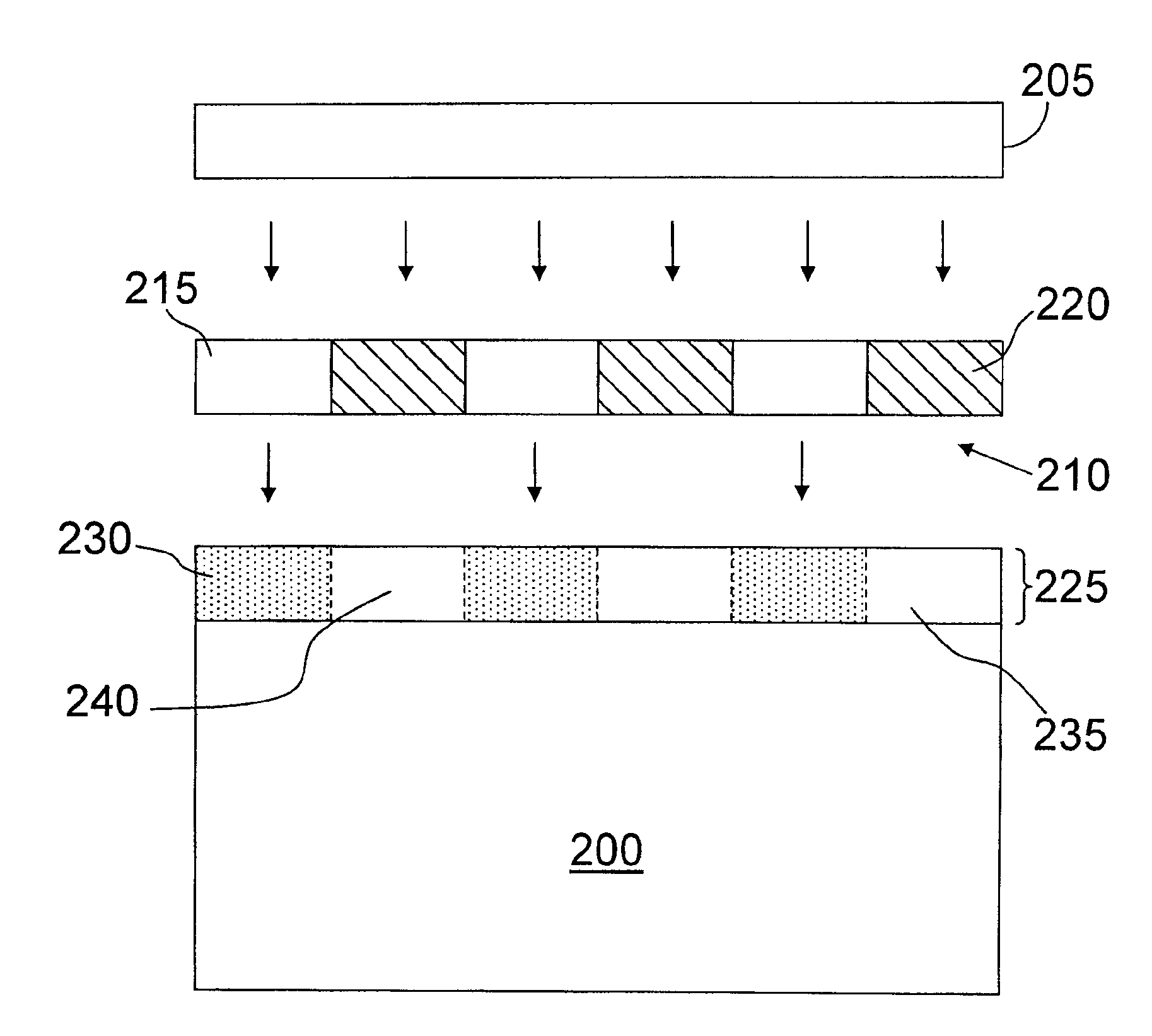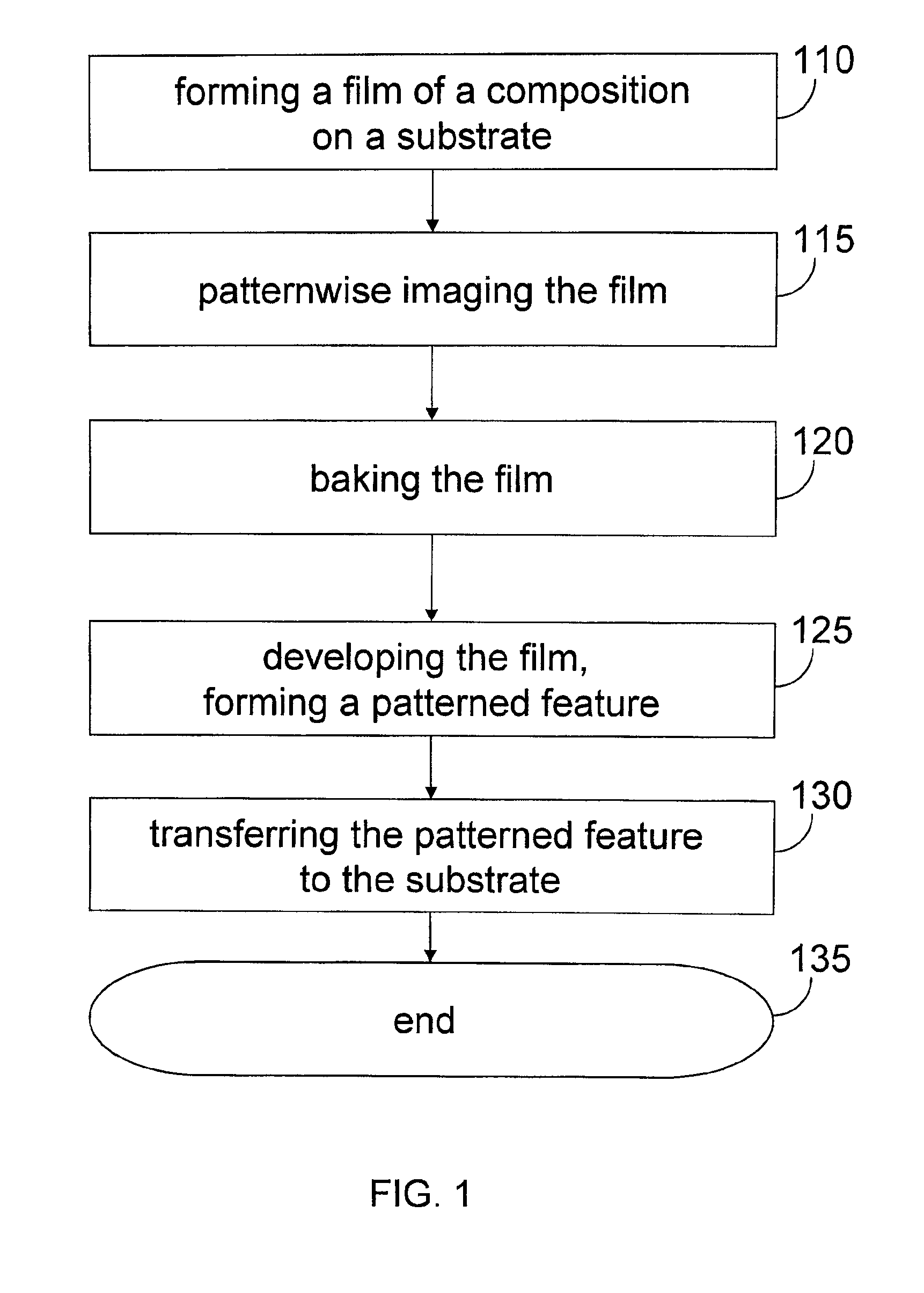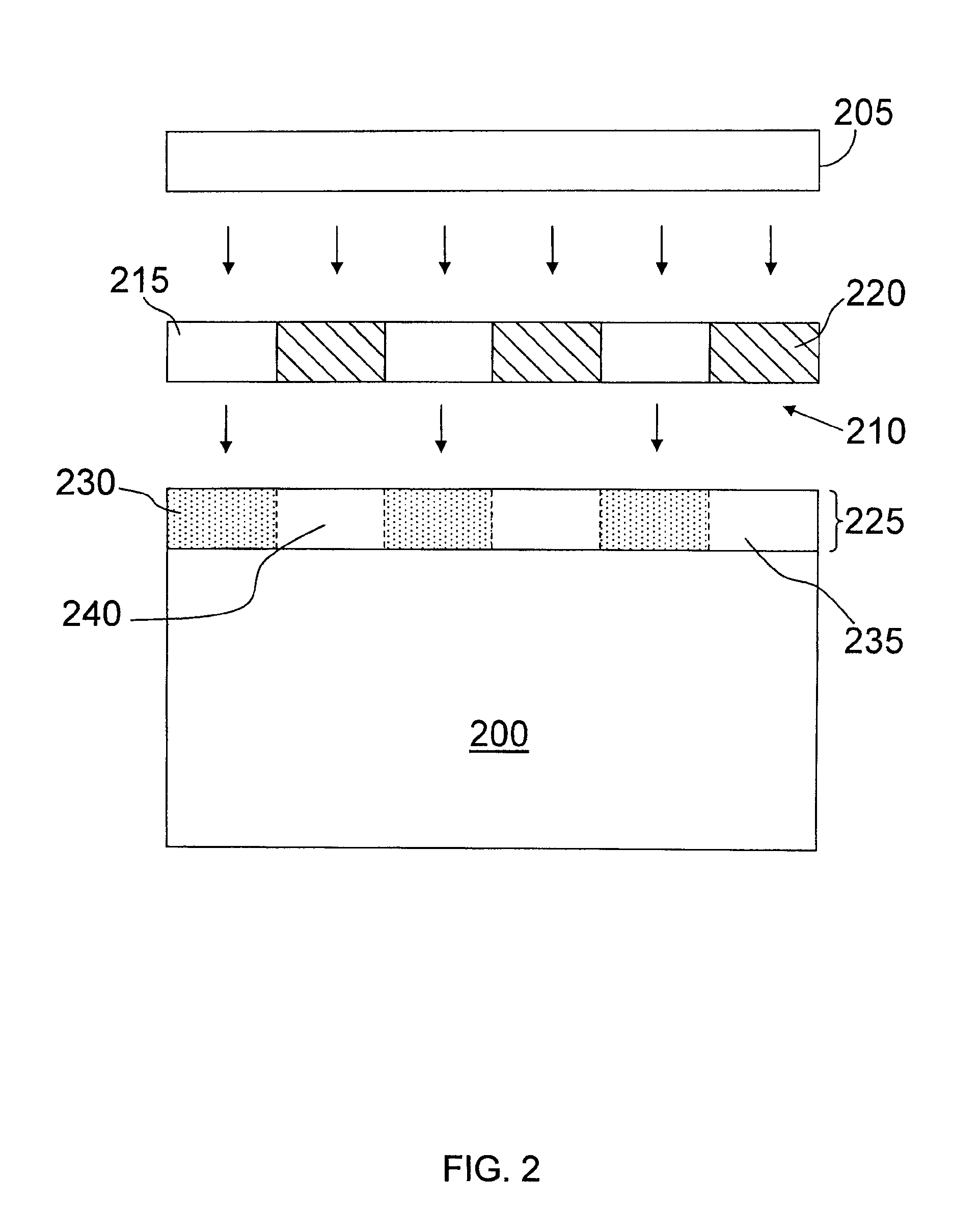Fused aromatic structures and methods for photolithographic applications
a technology of aromatic structures and photolithography, applied in the direction of photosensitive materials, instruments, photomechanical equipment, etc., can solve the problem of etching through silicon oxide layers that may present a difficult challeng
- Summary
- Abstract
- Description
- Claims
- Application Information
AI Technical Summary
Problems solved by technology
Method used
Image
Examples
example 1
[0037]Synthesis of methoxycyclohexene Protected 9,10-bis(3,5-dihydroxyphenyl) anthracene (BDHPA-MOCH).
[0038]Approximately 10 g of propylene glycol methyl ether acetate (PGMEA) was added to 600 mg of 9,10-bis(3,5-dihydroxyphenyl) anthracene (BDHPA), and this mixture was stirred for a few hours, during which the solution did not turn clear. The unclear solution was then added to approximately 13 mg of oxalic acid. After the acid was dissolved, an excess amount of 1-methoxycyclohexene (approximately 2.4 g) was added to the solution, and the reaction was stirred overnight at room temperature, during which the solution became clear. The reaction was then quenched with about 2.6 g of basic active aluminum oxide.
example 2
[0039]Synthesis of methoxycyclohexene Protected 3,3,3′,3′-tetramethyl-1,1′-spirobiindane-5,5′,6,6′-tetraol (TSPT-MOCH).
[0040]Approximately 31.5 g of propylene glycol methyl ether acetate (PGMEA) was added to 3.5 g of 3,3,3′,3′-tetramethyl-1,1′-spirobiindane-5,5′,6,6′-tetraol (TSPT), and this mixture was stirred for a few hours, during which the solution did not turn clear. The unclear solution was then added to approximately 30 mg of oxalic acid. After the acid was dissolved, an excess amount of 1-methoxycyclohexene (about 7.7 g) was added to the solution, and the reaction was stirred overnight at room temperature, during which the solution became clear. The reaction was then quenched with 5 g of basic active aluminum oxide.
example 3
[0041]Synthesis of methoxycyclohexene Protected 9,10-bis(3,5-dihydroxyphenyl) anthracene Linked with 1,4-cyclohexanedimethanol divinylether (BDHPA-DVE-MOCH).
[0042]Approximately 14.25 g of propylene glycol methyl ether acetate (PGMEA) was added to 750 mg of 9,10-bis(3,5-dihydroxyphenyl) anthracene (BDHPA), 0.309 g 1,4-cyclohexanedimethanol divinylether, and 19.8 mg of trifluoroacetic acid. The mixture solution was stirred for a few days at room temperature, during which the solution became murky but not clear. After 0.78 g of 1-methoxycyclohexene was added to the solution, the solution became clear after approximately 5-6 hours of stirring. The reaction was then quenched the next day with about 4 g of basic active aluminum oxide.
PUM
 Login to View More
Login to View More Abstract
Description
Claims
Application Information
 Login to View More
Login to View More - R&D
- Intellectual Property
- Life Sciences
- Materials
- Tech Scout
- Unparalleled Data Quality
- Higher Quality Content
- 60% Fewer Hallucinations
Browse by: Latest US Patents, China's latest patents, Technical Efficacy Thesaurus, Application Domain, Technology Topic, Popular Technical Reports.
© 2025 PatSnap. All rights reserved.Legal|Privacy policy|Modern Slavery Act Transparency Statement|Sitemap|About US| Contact US: help@patsnap.com



